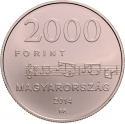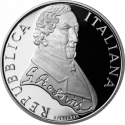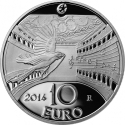You are about to finish your registration. Please check your mailbox (including spam folder). There should be a letter with a confirmation link. Check setting to make sure that your e-mail address is correct.
Send letter againDescription
Béni Egressy (born Galambos Benjámin; 1814–1851) was a Hungarian composer, conductor, and actor, celebrated for his significant contributions to Hungarian music, particularly in opera and theater. Born in Kecskemét, Hungary, Egressy displayed early musical talent and embarked on his career as a violinist.
Egressy's notable achievements center around Hungarian national opera. He closely collaborated with the esteemed Hungarian poet Sándor Petőfi, composing music for many of his poems. Among his renowned works is the opera "Bánk bán," featuring a libretto by József Katona, which remains a cornerstone of Hungarian operatic repertoire.
Apart from composing, Egressy also earned recognition as a conductor and actor. He participated in various theatrical productions, leaving a lasting impact on the cultural landscape of 19th-century Hungary.
The collector coin is part of the Europa Coin Programme, also known as the European Silver Programme, or the Eurostar Programme. It is an initiative dedicated to the issuance of collector-oriented legal tender coins in precious metals to celebrate European identity. The issuing authorities of EU member countries voluntarily contribute coins to the Europa Coin Programme. Multiple countries have participated in the programme, beginning in 2004. Some coins are denominated in euro, others are denominated in other currencies.
Engraver: László Szlávics Jr.
Obverse

|
Depicts the bust portrait of Béni Egressy. Encircling the edge in a semicircle, to the left of the portrait is his name and to the right are the birth and death years. Between the portrait and the semicircle inscription is the engraver's privy mark, and below the inscription on the right side is the Eurostar logo (the special mark used on coins to indicate participation in the Europa Coin Programme). EGRESSY BÉNI 1814-1851 |
|---|---|
Reverse

|
Depicts a fragment of the sheet music of the Hungarian poem "Appeal". Above it, in two horizontal lines, the denomination is displayed, with the inscription "FORINT" on the left. Below the sheet music, in three horizontal lines, the inscription "HUNGARY", the issuance year "2014," and the mintmark "BP" are visible. 10000 |
| Edge |
10 000 Forint
Hungary
Eurostar - European Composers
200th Anniversary of Birth of Béni Egressy
Subscribe series
Adamo# EM271
Eurostar - European Composers
200th Anniversary of Birth of Béni Egressy





